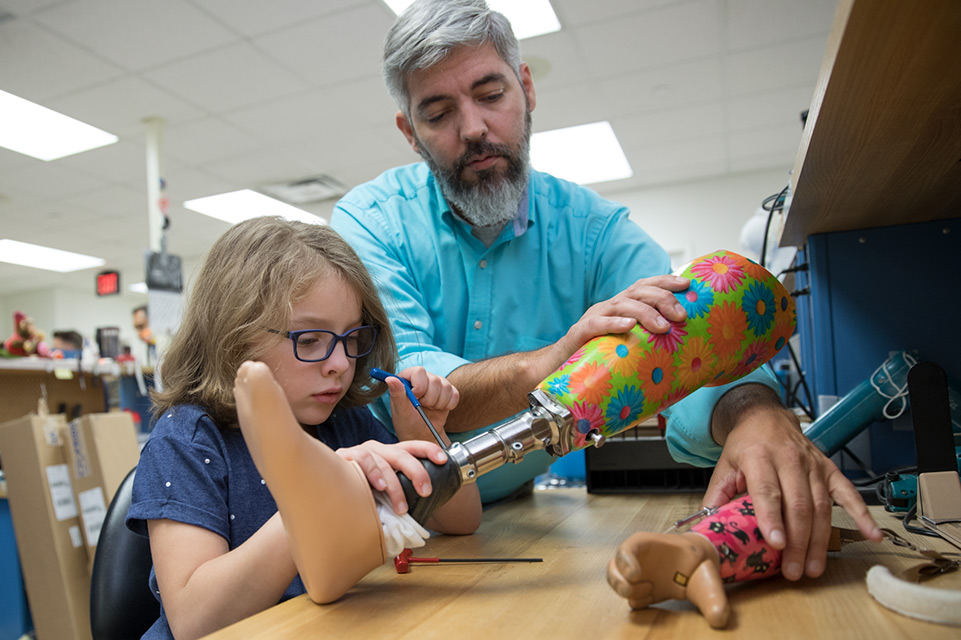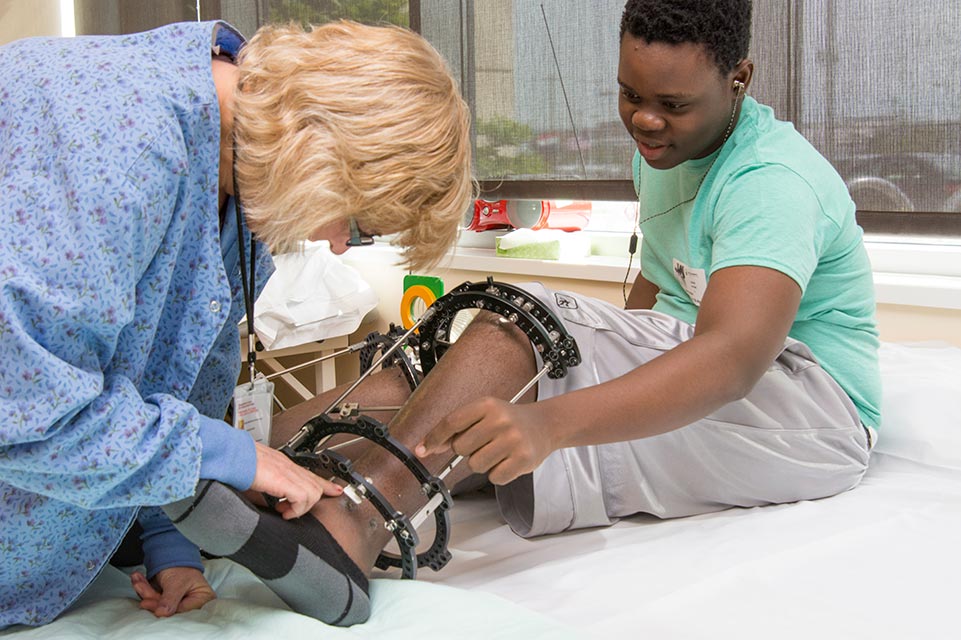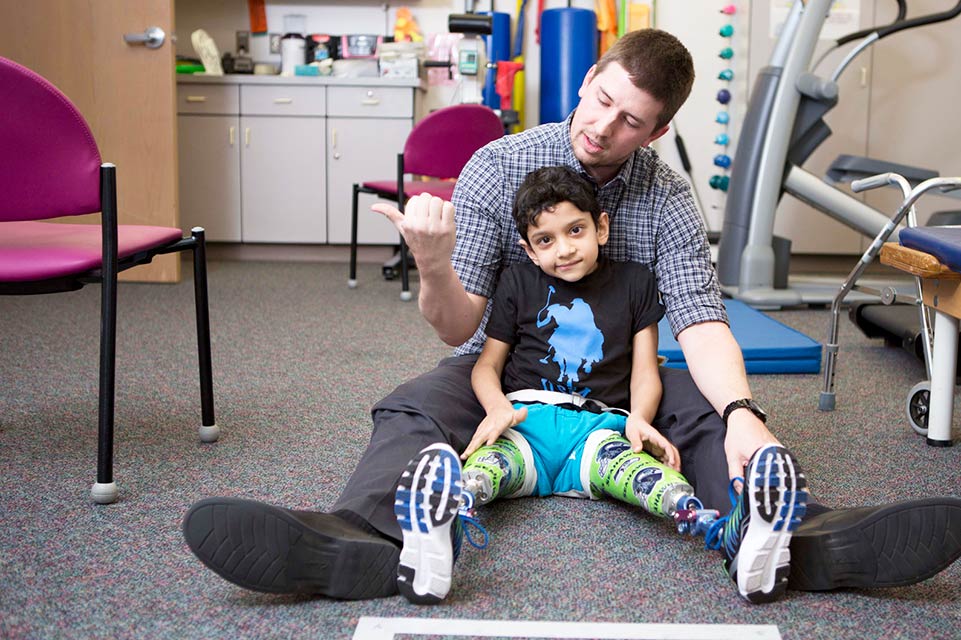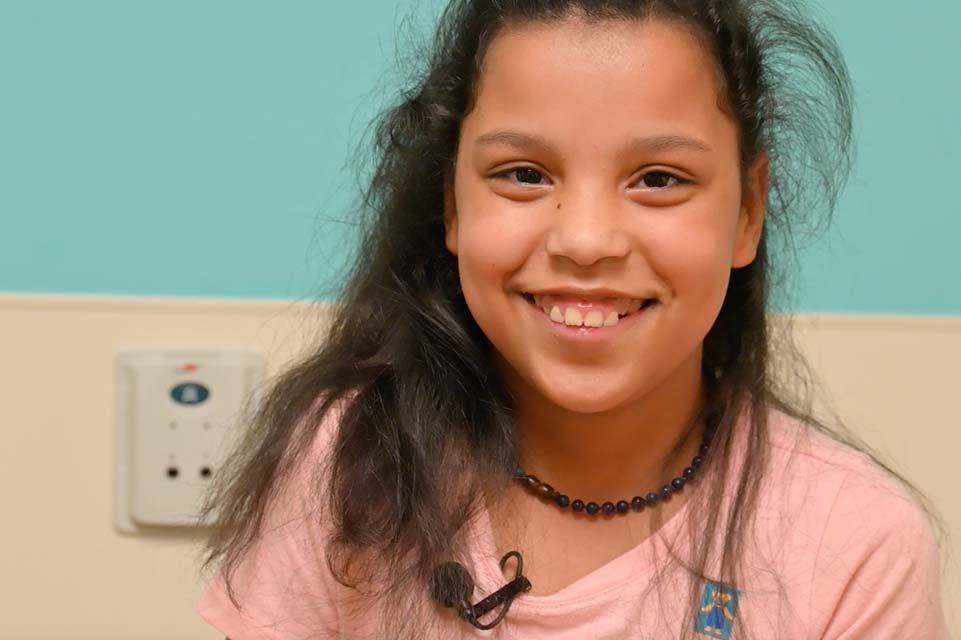Limb Deformities
Unparalleled pediatric orthopedic surgery and hand surgery for common and rare limb deformities in children.
Many differences in the arms and legs of growing children are perfectly normal. But parents aren’t sure what to do when their child’s leg turns in or their child’s leg or arm looks different than the other one. Limb deformities in children are some of the most common reasons families visit a pediatric orthopedic surgeon.
Shriners Children's is one of the largest networks of hospitals, medical centers and outpatient facilities in North America that specializes in pediatric orthopedics. Our orthopedic specialists can help parents understand when to let growth and time be the cure, and when to intervene with medical treatment. Families also love when their child sees "other kids that look like me" when they visit Shriners Children’s.
Because Shriners Children’s provides all care and services regardless of a family’s ability to pay or insurance status, physicians and families are able to consider every appropriate treatment option available, to bring hope and healing to a child. We offer bracing, physical therapy and surgery in a family-centered environment with support services to help each child reach their full potential.
Specific treatments and services may vary by location. Please contact a specific location for more information.
Understanding Limb Deformities
Limb deformities or limb differences mean a child’s leg or arm is short, twisted or angled differently than normal. Children can be born with them (congenital) or develop a limb deformity later through injury or a disease that affects their bones (acquired).
Limb deformities can range from mild to severe. Some are diagnosed thru prenatal ultrasound (limb deficiencies where bones grow more slowly or are missing) while some aren’t obvious until a child begins to crawl or walk, such as a limb length difference.
Children outgrow many limb differences through normal growth and development. If a child is in pain or can’t keep up with other children, that’s always a reason to see a pediatric orthopedic surgeon at any age. Another reason is if the difference is only on one side of the child’s body.
More severe limb deformities can cause pain, differences in the way kids walk (gait abnormalities) or even early arthritis.
Shriners Children’s pediatric orthopedic surgeons can evaluate and treat all types of limb deformities in children. Our team approach includes skilled orthotists and prosthetists, and physical and occupational therapists.
Limb Deformity Conditions
Some of the most common limb deformities we evaluate include:
- Knock knees (genu valgum) Many children may have mild knock-knees between the ages of 3 and 6.
- Bow legs (genu varum)
- Blount’s disease
- Rickets
- Intoeing - lower or upper leg bone is turned inward
- Out-toeing
- Limb length discrepancies
- Limb deficiencies
- Curved or deformed leg bones due to fibular or tibular hemimelia
- Arm differences like ulnar longitudinal deficiency
- Bones disorders such as osteogenesis imperfecta
- Marfan syndrome
- Achondroplasia and other skeletal dysplasias
- Neurofibromatosis bone deformities
- Clubfoot and foot deformities
- Injury that results in abnormal bone growth
This is not a complete list. If you do not see your child's condition contact a Shriners Children's location.
Treatment of Limb Deformities
Our pediatric orthopedic surgeons are experienced with all types of treatment for limb deformities. Treatments vary depending on child’s condition.
Sometimes all that’s needed is a shoe insert or brace from a certified prosthetist. We make it convenient for families with on-site Pediatric Orthotics and Prosthetics Services.
Other times, limb lengthening surgery and rehabilitation with physical therapy and occupational therapy may be needed. We offer a variety of surgical techniques such as:
- Epiphysiodesis: This simple surgical intervention safely and deliberately interrupts the growth of one leg so that the shorter leg can catch up and eventually reach equality with the other.
- Limb lengthening and reconstruction with external fixators. This surgery helps a limb generate new bone and straighten using the power of a child’s own growth.
- In some circumstances, amputation and fitting the child for an artificial limb called a prosthetic, might be the best option to help them have a healthy life and achieve their goals and dreams.
Honestly, Shriners Hospitals is the best thing. I’m so happy we found out about them. Tommy goes two to three times a year for a check-up.

Standing, Low-dose X-Ray Technology
Innovative Treatments
View All Related Treatments
Limb Lengthening

Physical Therapy





